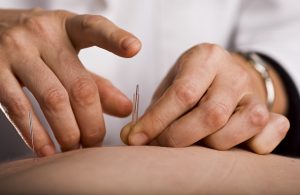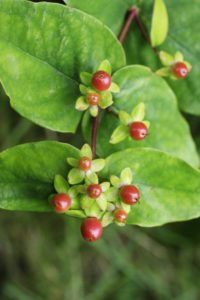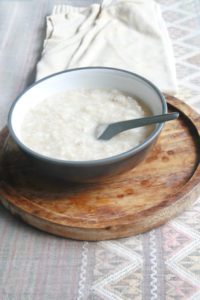Chinese Medicine
Chinese medicine focuses on normalizing the functions of major organs and restoring overall health to strengthen the body’s immune functions.
Many people with chronic health condition(s) turn to traditional Chinese medicine (TCM) for treatment. In the western world, TCM is often considered “complementary” medicine.
In mainland China, Taiwan and other areas with Chinese origin, TCM is widely considered an integral part of the health care system and is often used as a primary form of medicine.
In the United States, TCM is a popular complementary medicine (CM) therapy among people with chronic health condition(s). TCM uses nutrition, acupuncture, heat therapies (such as moxibustion), exercise, massage, meditation, and herbal medicine to treat people with chronic health condition(s). Chinese medicine asserts that the body itself is the major healing force. Medications and procedures can help the body heal, but they cannot replace the healing function of the body. In treating chronic health condition(s), Chinese medicine focuses on normalizing the functions of major organs and restoring overall health to strengthen the body’s immune functions. As the body becomes stronger, the disease itself can be controlled and the body can return to balance.
Read more about Chinese Medicine:
Traditional Chinese Medicine
TCM defines the physiological components of illness using the concepts of qi (vital energy), xue (blood), jin-ye (body fluids), jing (essence), shen (spirit), and organ systems. Organ systems are domains within the body that govern particular body tissues, emotional states, and activities.
TCM theory states the key to health is the internal ability of the body to remain strong.
According to this theory, people are born with a certain amount of original qi (pronounced “chee”). The qi is easily depleted as the body uses energy and is not replaced.
It is difficult to increase the original qi. A person must work hard during life just to retain it. Exercise such as tai chi and qi gong, healthy eating, and good sleep habits are highly recommended for maintaining the original qi. If a person consistently lacks sleep, does not have a healthy diet, abuses drugs or alcohol, and/or has excessive or unsafe sex, he or she becomes qi deficient. When weakened and qi deficient, a person is more susceptible to infection by harmful external elements.
Acupuncture
 Acupuncture is perhaps the most well-known form of TCM in the United States. It is the art of inserting fine, sterile, metal filiform needles into acupuncture points on the body in order to control the flow of energy (qi).
Acupuncture is perhaps the most well-known form of TCM in the United States. It is the art of inserting fine, sterile, metal filiform needles into acupuncture points on the body in order to control the flow of energy (qi).
The various modalities of TCM therapy include diet, massage, heat therapies, exercise, meditation, and acupuncture. Heat therapies include the use of moxibustion. Moxibustion is the burning of the herb mugwort over certain areas of the body to stimulate or warm these areas. Exercise therapy ranges from martial arts to more subtle forms of movement such as tai chi and qi gong.
Acupuncture is perhaps the most well-known form of TCM in the United States. It is the art of inserting fine, sterile, metal filiform needles into acupuncture points on the body in order to control the flow of energy (qi). Acupuncture therapy can include electrostimulation and/or hand stimulation. This form of therapy is most appreciated for its ability to relieve pain. However, acupuncture is also able to help change body energy patterns, which promotes the body’s ability to heal itself of disease syndromes and symptoms.
In these treatments, TCM often does not distinguish energetic effects from physiologic effects. The different modalities of TCM have different aims. Some focus on balancing the body’s energy, while others focus on building the physical body and adding substances to both balance and change the body materially. For example, the Enhance® herbal preparation used in HCV, as well as HIV, contains herbs to tonify the spleen qi and build xue. Qi tonification increases the amount of energy available for certain bodily function. Qi tonic herbs often have the specific effect of increasing digestion and food absorption. This increases the quality of the blood (xue).
Acupuncture is associated with balancing the body’s energy levels, while herbal substances are more like drugs or foods in that they have specific physical effects. Breathing exercises are known to strengthen qi. One meaning of the Chinese word qi is air. By learning how to breathe correctly, more oxygen is made available to enter the bloodstream.
TCM uses acupuncture extensively in the treatment of chronic health condition(s). The primary goal of acupuncture treatment is to readjust the body’s qi in order to enable the body to heal itself.
TCM uses acupuncture extensively in the treatment of chronic health condition(s). Though some of the herbal theories already discussed may apply to acupuncture, the primary goal of acupuncture treatment is to readjust the body’s qi in order to enable the body to heal itself. Therefore, acupuncture treatment can be used to treat both specific symptoms and a general epidemic pattern.
After a TCM diagnosis is given for a patient with lchronic health condition(s), an acupuncture treatment plan is developed by considering the epidemic nature of the disease, the individual’s complaints, and any underlying constitutional TCM patterns of illness. On a symptomatic level, acupuncture treatments can address digestive functions, appetite, energy level, stress, anxiety, depression, pain, and skin complications. Acupuncture can play a role in relieving side effects of therapies commonly used by western medical practitioners in the treatment of chronic health condition(s)
An important part of TCM treatment in some chronic health condition(s) is the use of moxibustion.
 Moxibustion is the burning of the herb mugwort (called moxa in Chinese) over certain points or areas of the body that correspond to acupuncture points. Moxa is rolled into a cigar-like stick or used loose over protected skin to create warmth and tonification. In Chinese studies, moxa has been shown to increase digestive function, white blood cell and platelet counts, and may have an effect on the transformation of T cells (one type of immune cell). Moxibustion is often used for pain syndromes and areas that appear or feel cold on the body.
Moxibustion is the burning of the herb mugwort (called moxa in Chinese) over certain points or areas of the body that correspond to acupuncture points. Moxa is rolled into a cigar-like stick or used loose over protected skin to create warmth and tonification. In Chinese studies, moxa has been shown to increase digestive function, white blood cell and platelet counts, and may have an effect on the transformation of T cells (one type of immune cell). Moxibustion is often used for pain syndromes and areas that appear or feel cold on the body.
Herbal Medicine
 In the last several decades, Chinese medicine has developed two herbal medicine modern principles, Fu Zheng and Jiedu/Qu Xie. Originally developed for use in cancer in the 1970’s, they are now used in treating chronic viral infections and other infectious disease. Fu Zheng uses treatments to support the body’s natural disease-fighting systems (that is, the immune system). Jiedu/Qu Xie, focuses on eliminating External Pernicious Influences (outside pathogens). In western terms, Fu Zheng and Jiedu/Qu Xie can be called immune-regulating and anti-toxin therapies. As the body becomes stronger, the disease itself can be controlled and the body can return to balance.
In the last several decades, Chinese medicine has developed two herbal medicine modern principles, Fu Zheng and Jiedu/Qu Xie. Originally developed for use in cancer in the 1970’s, they are now used in treating chronic viral infections and other infectious disease. Fu Zheng uses treatments to support the body’s natural disease-fighting systems (that is, the immune system). Jiedu/Qu Xie, focuses on eliminating External Pernicious Influences (outside pathogens). In western terms, Fu Zheng and Jiedu/Qu Xie can be called immune-regulating and anti-toxin therapies. As the body becomes stronger, the disease itself can be controlled and the body can return to balance.
Qi Gong
 Many studies show the positive effects of qi gong on immune function.
Many studies show the positive effects of qi gong on immune function.
Qi gong meditation and exercise is a common practice in China. It is growing in popularity in the United States among people who have many types of long-term disease. Many studies show the positive effects of qi gong on immune function. Many locations around the United States offer medical qi gong classes specifically designed for people living with long-term disease.
Nutrition
 Most TCM practitioners recommend that people generally eat a cooked, warm diet in order to strengthen the spleen and stomach.
Most TCM practitioners recommend that people generally eat a cooked, warm diet in order to strengthen the spleen and stomach.
A healthy diet is considered a key part of maintaining qi and harmony in the body. Most TCM practitioners recommend that people generally eat a cooked, warm diet in order to strengthen the spleen and stomach. Other recommendations are based on the specific organ pattern diagnosis. For example, those suffering from chronic diarrhea may be advised to eat white rice (not brown) or barley daily, especially in the form of an easy-to-make rice porridge called congee or jook. A low-glycemic diet is also advised to control insulin resistance.
